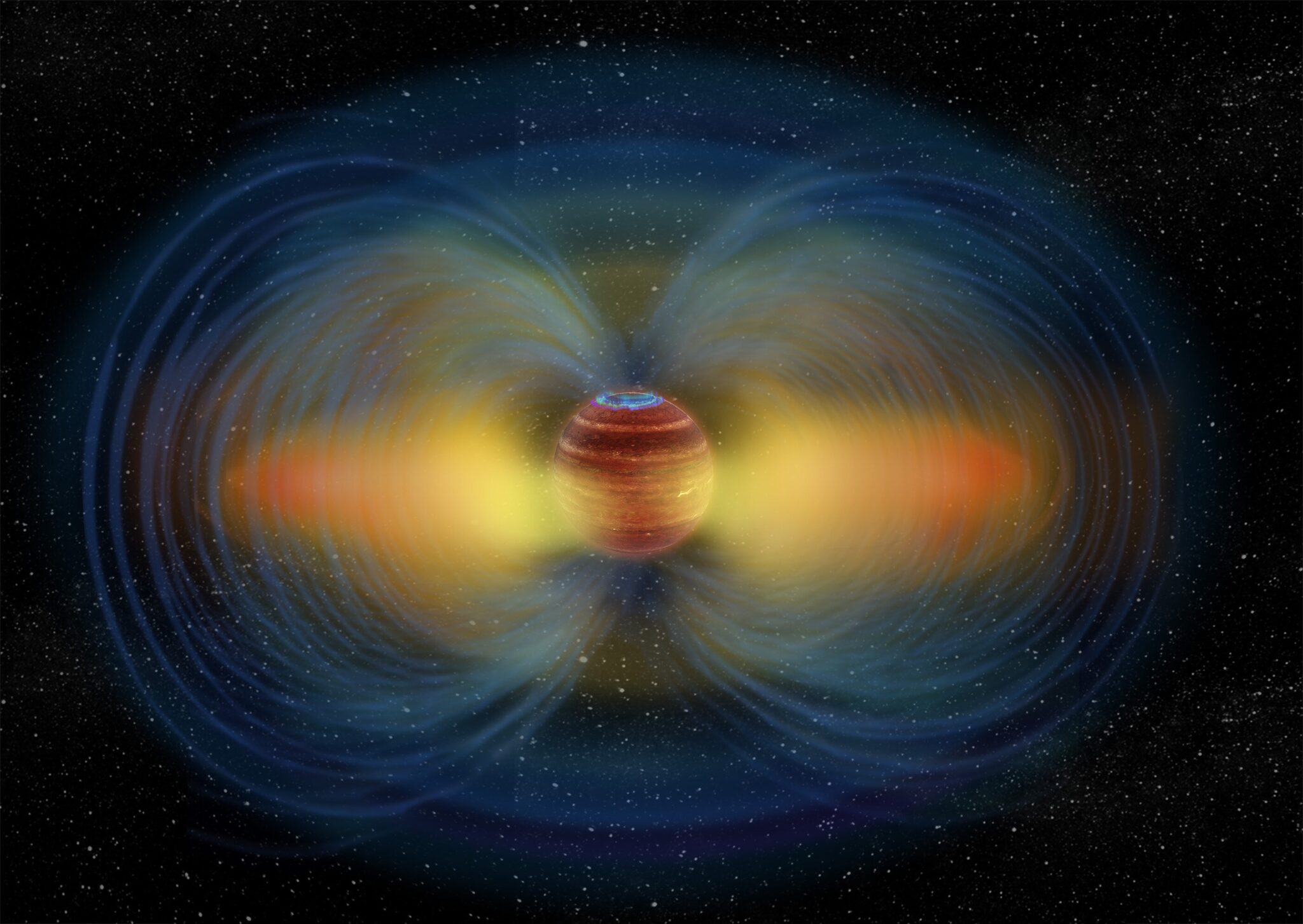For the first time in history, scientists could see the presence of a radiation belt around an astronomical object located outside our Solar System. This groundbreaking discovery concerns a Jupiter-sized body located about 18 light-years from Earth.

Astronomers have observed a belt consisting of energetic electrons that surround a celestial object. As they move, these electrons emit radio waves. The existence of radiation belts provides valuable information about the shape of the magnetic field, the internal structure, and perhaps even the presence of moons around cosmic bodies.
How was the radiation belt discovered?
To detect similar radiation belts outside our Solar System, astronomer Melodie Kao and her team observed a Jupiter-sized object known as LSR J1835+3259 using a network of 39 radio antennas stretching from Hawaii to Germany. This network actually formed a radio telescope with a diameter equivalent to the diameter of the Earth, which allowed researchers to carefully study the environment of the object.
According to Kao from the University of California, Santa Cruz, the team successfully discovered a belt very similar to Jupiter’s radiation belts, but about 10 million times brighter, at an object that is almost 80 times the mass of Jupiter. Therefore, it is quite possible that in fact this object is either a dwarf star or a massive brown dwarf.
Radiation belts in the Solar System
In our Solar System, every planet that has a magnetic field also has radiation belts. For example, the Earth has the famous Van Allen belts, which consist of electrons captured by the Sun. Jupiter’s radiation belts consist of particles from the volcanic moon Io. In both cases, the planet’s magnetic field traps electrons inside the bubble surrounding the celestial body, resembling fireflies in a jar.
Unsolved mystery
But one of the important mysteries remains: where does the object get the electrons for its bright radiation belt? An exoplanet or star has no companion and does not show flare emissions. Although a volcanic moon could potentially explain the presence of the belt, this remains an assumption.
Knowing that LSR J1835+3259 has a radiation belt will help researchers decipher data from exoplanets in the future, even if direct observation of such belts remains difficult.
According to Phys.org
Follow us on Twitter to get the most interesting space news in time
https://twitter.com/ust_magazine
